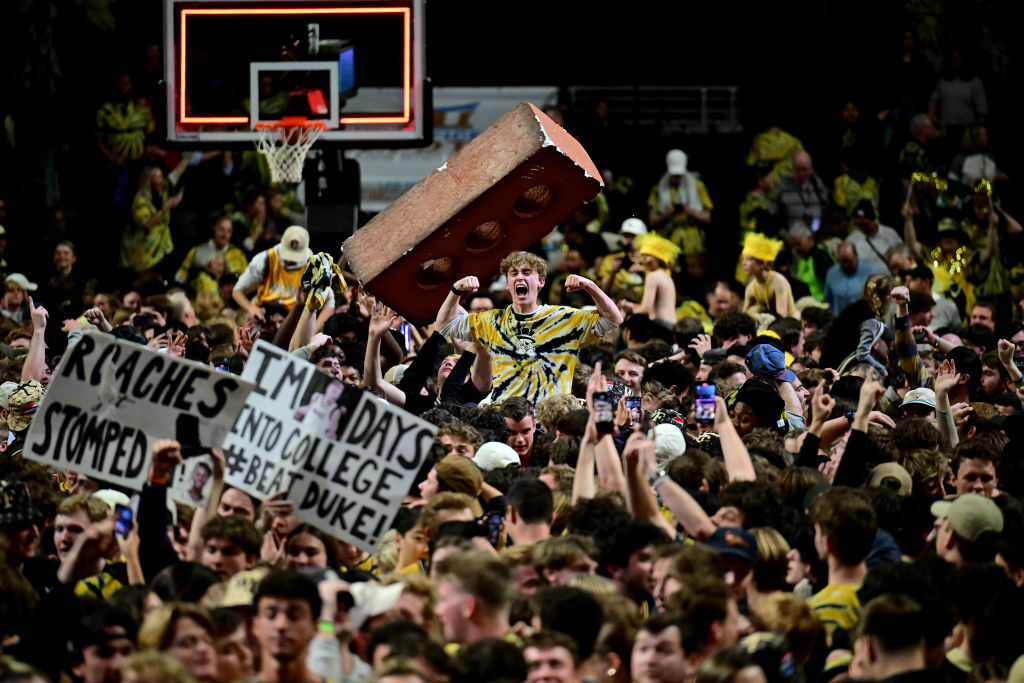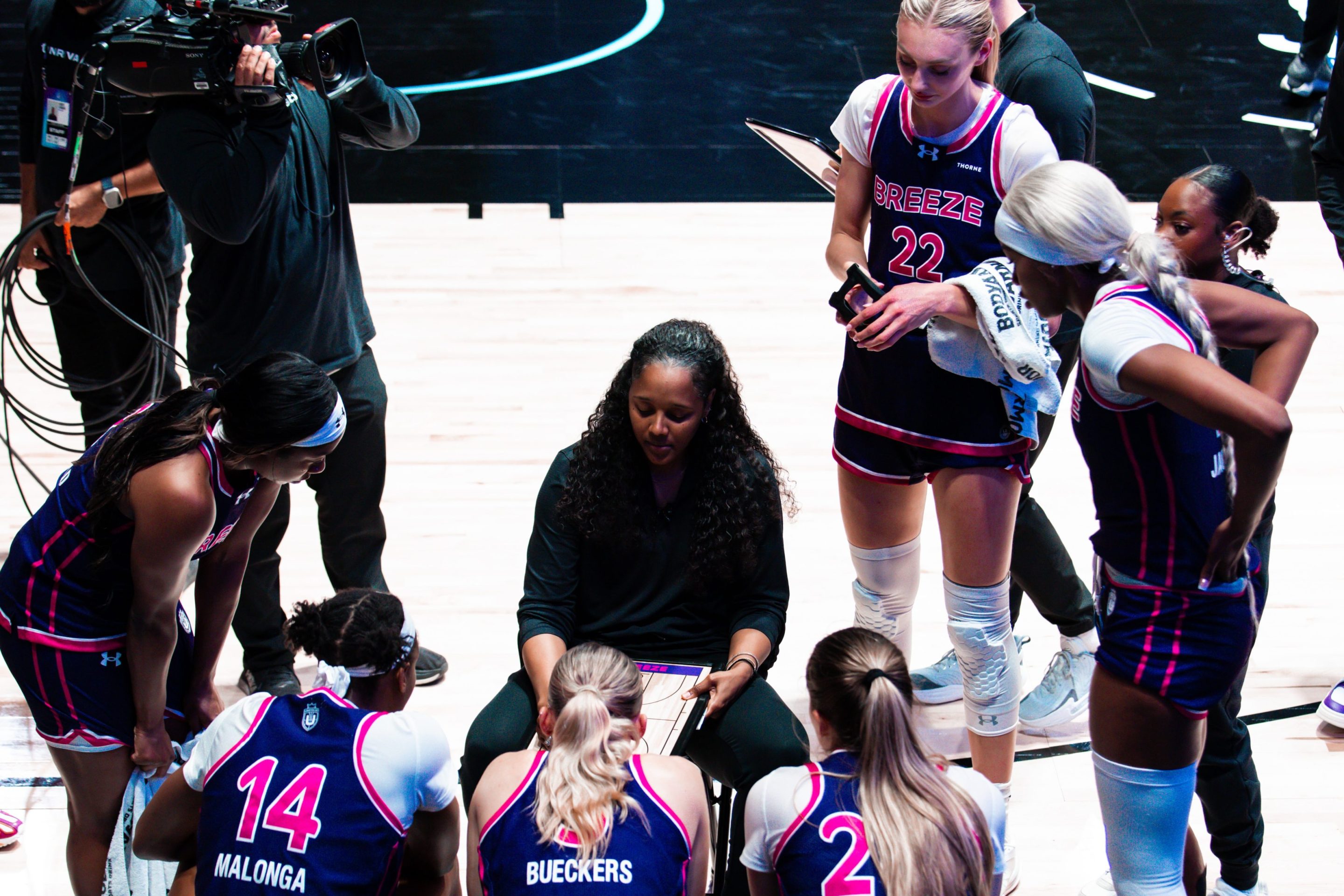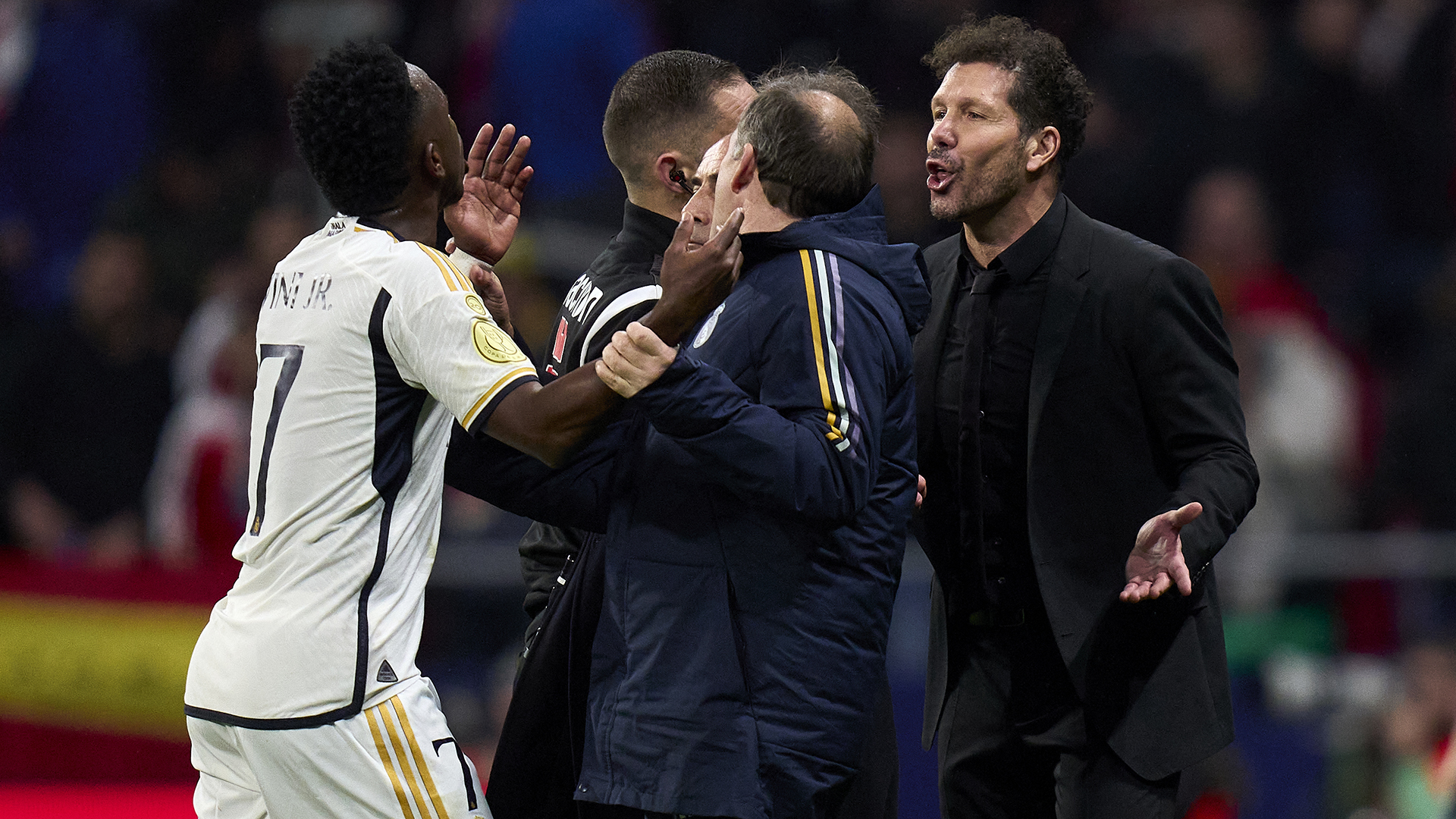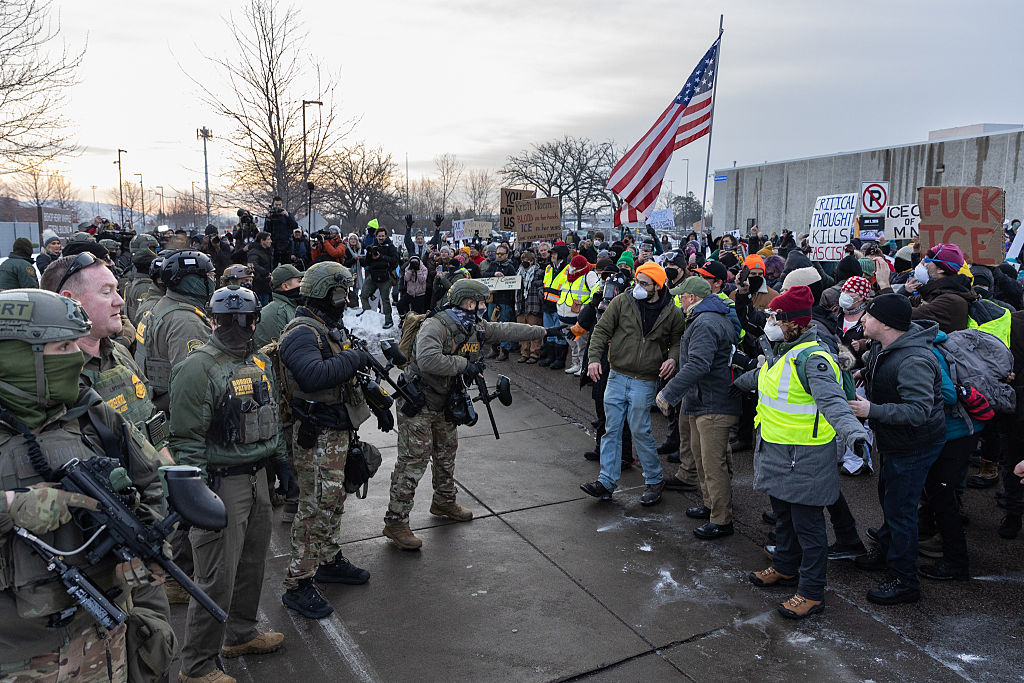Wake Forest took it down to the wire in an upset 83-79 win against No. 8 Duke Saturday afternoon in a basketball game that had 14 ties and just as many lead changes. This would normally be the part of the blog where I talk about the ridiculous performance of Hunter Sallis. The Demon Deacons junior guard led all scorers with 29 points, going 11-of-13 from the field, and closing the door on Duke for good with 1.8 seconds left, sinking two free throws to win the game. Instead, I must first talk about Duke's Kyle Filipowski.
After those last 1.8 seconds ticked away and the final horn sounded in Winston-Salem, a frenetic blur of black and gold heaved from the stands and Wake Forest fans stormed the court to celebrate victory. In the process Filipowski was injured. Studying the ESPN footage closely from Zapruder-like angles, you can see Filipowski in the midst of the fray when he takes contact, only to find teammates and a member of the Duke staff to help him hobble off the court.
Filipowski, who led Duke with 17 points and eight rebounds, was seen with his right knee wrapped in ice following the game and told local TV station WFMY that he thought Wake Forest fans intentionally injured him. Duke coach Jon Scheyer was predictably mad in the post-game presser, telling the gaggle, “When are we going to ban court-storming," before continuing: "How many times does a player have to get into something where they get punched or they get pushed or they get taunted right in their face? It’s a dangerous thing.”
Dangerous indeed. What if a player is tasered or even invited to a book club for a book they have not read during a court storming? If this all sounds familiar, you may recall a few weeks ago Pure Hooper Caitlin Clark got clipped during an on-court celebration following Ohio State's upset of Iowa in Columbus. This was followed by a Memphis player getting touched by a Tulane fan during a court rush after a win on Jan. 22; a fracas after Iowa State beat Kansas on Jan. 27; and subsequent stormings after games in South Carolina, Oregon State, and several more.
All of this has produced more red-faced men wheezing and crying about the safety and sanctity of the sport. Here comes ESPN's Seth Greenberg lambasting Wake Forest for not having better security in place. There goes CBS Sports' Gary Parrish appealing to the heavens: "We were always trending to this direction where somebody important, somebody very visible, somebody for one of the biggest brands in the country, was going to be injured in a court storming." Will someone, anyone think of the brands?
We know what happens next. We can expect handwringing and angry tweets and somber sports talk TV roundtables about integrity and safety. And there will be athletic directors and conference officials murmuring in dense, low tones, and fines will be levied. There will be new ideas on security put forward, like introducing AI and facial recognition cameras in stadiums to deter hooligans.
Everyone involved in college sports deserves to be safe from harm or violence, unforeseen or very much predictable. But at this point, could we maybe get some kind of ruling on where things stand vis-a-vis this whole court storming thing? Can someone tell us exactly which part of this we are supposed to care about more? I was led to believe that storming the court is objectively cool and your right as a True Fan. Then again, if I've followed college sports correctly, the chances of random horrible injury are in the air at any moment in time.
This is all very confusing. It's my understanding all of this is baked into the sport, as necessary to the recipe as clutch three-pointers (or not knowing when to need a three-pointer), nervy mascot shenanigans and floppy-haired band sickos in the horns section going ham on Survivor's "Eye of the Tiger." Doesn't all of this fall under the category of tradition? Why else are words like madness, or mayhem so synonymous with college basketball? Isn't college sports driven by the berserker rage of fandom?
Would it be better if I shame Wake Forest and its fans for celebrating a good win and keeping their tournament hopes alive, or shrug off Filipowski's injury and tell him to play more active defense after the buzzer sounds? I need clarity here! I can't be expected to hold both ideas in my head at the same time? That's how you wind up sounding like Wake Forest coach Steve Forbes, who had to sprinkle the necessary level of self-flagellation into his postgame comments: "I don't like court stormings. Never have," he said after a game his team had just won. "I've been a part of those before as a coach. Just don't feel safe. I'm sure the next time that happens we'll do a better job of taking care of that situation."
Saturday's game between Duke and Wake Forest was the platonic ideal of what we are supposed to want from a regular-season afternoon college basketball matchup: a ranked legacy program trying to reassert itself against a team on the bubble for March Madness. Students and boosters tuned up on cheap beer and vibes, swaying and chanting in an overpacked barn of an arena as steely-eyed coaches prowl the sidelines (or, perhaps jump on the court as necessary). Games like this are the reason home-court advantage exists! It comes from the frothing intensity that builds from fans over the course of a tight game, the energy that feeds a team when the tank is empty, or rattles the opponent as the crucial shot lifts from their fingertips.
If that all sounds like a CBS Sports promo you'd find following a preview of next week's episode of Tracker, it's because this is the stuff that drives college basketball. I bet you are absent-mindedly humming "One Shining Moment" to yourself right now. This is the reason why every outlet that reported on Filipowski's injury mentions the implications to Duke's remaining schedule and tournament seeding in the same breath. How can court storming be a reprehensible act when it is also a core tenet of the fable we are fed by people who benefit off the labor of student athletes? I am still very perturbed by all of this!
It seems possible that college sports is like all sports, filled with uproarious joy and devastating violence, and sometimes those things are too closely intertwined. This is the risk and reward that fuels outrageous victory. It's awful whenever an athlete is injured in a celebration, one of their own making or an opponent's. At the same time, storming the court, or the field in football, can be a thrilling collective moment that becomes a cherished memory.
The answer here is to do whatever is necessary to make it safer, like placing players in inflatable bubbles before the final minute of regulation. Perhaps some sort of explosive safety foam that ejects from the court and nearby access points to hold fans in place while athletes are escorted to a panic room. Maybe one of those black retractable barriers from the DMV can keep the hordes at bay. In the meantime I am simply asking the NCAA, a body I have come to trust for its sound reasoning and concern for athlete safety, to tell me what is the correct thing for me to support while sitting on my couch. I await your answer!






